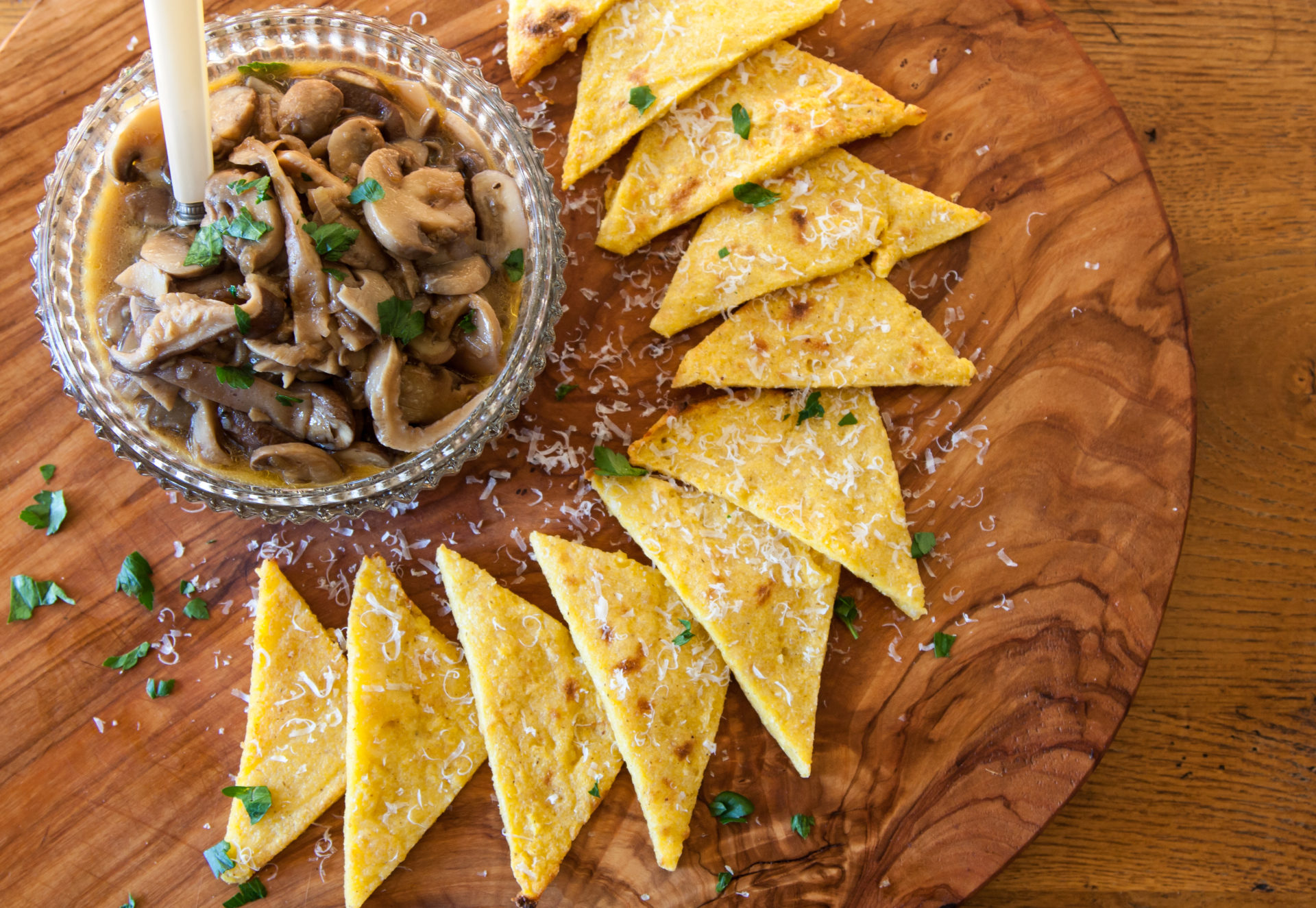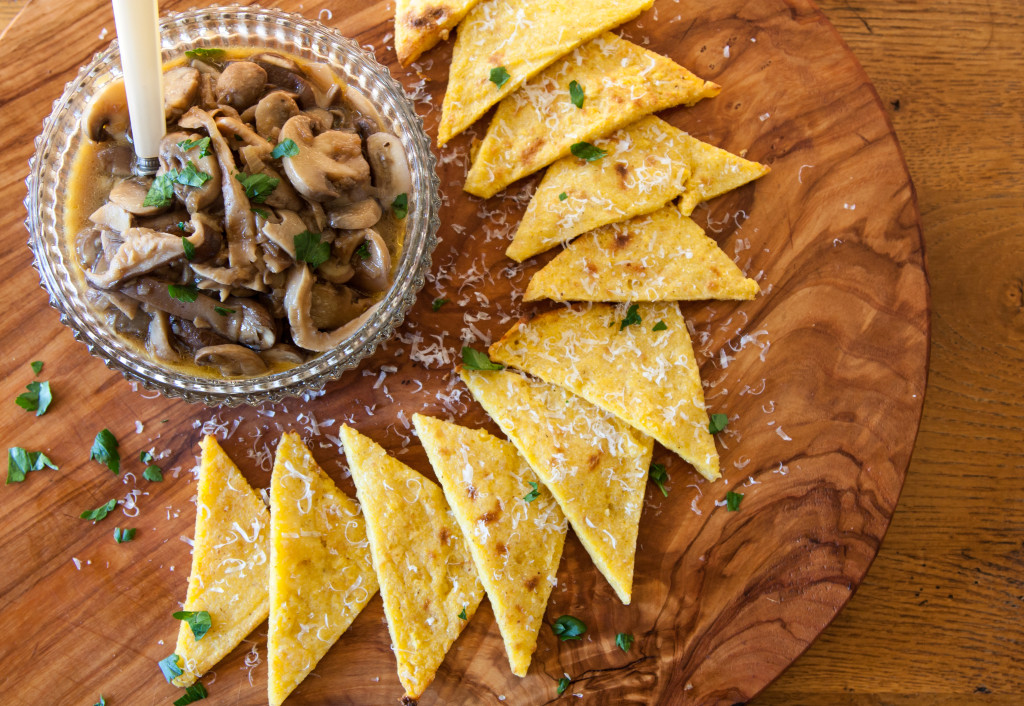I am off to Uganda to do some volunteer work in the week ahead but didn’t want to leave without posting an antipasto very fitting of our new Wanderings series! I love polenta this time of year – its humble roots are as good as comfort food gets. Its sunny yellow color infuses a dreary winter day with a bit of sunshine. We didn’t eat much polenta growing up as our mother’s roots lay far away in Sicilia but as an adult, this Italian staple has become on of my favorite winter treats. Polenta is said to have originated in this month’s ‘Wanderings’ region, Friuli Venezia-Giulia. In Lidia’s Italian Table, she talks about the origins of polenta. ‘The Romans prepared pultes, or porridges from many different grains and water. And in Friuli Venezia-Giulia, where I come from, there was a porridge made from spelt (whole kernels of emmer) that was know as pultes julians, meaning ‘coming from Juliani,” the name for the indigenous people of the area. When corn was introduced to this region, it was a natural to make the pultes out of cornmeal, hence the first polenta. In fact, the Italians of the North are often called polentoni, or “polenta eaters,” since polenta was, and still is, a main staple.” Whatever its origins, this delicious staple never fails to warm me to my soul.
I made this simple antipasto last evening for company….a wonderful make ahead appetizer that only needs the polenta heated and broiled in the oven for a few minutes as company arrives. A simple and sunny treat for a cold winter’s eve.
While I am away, Joey and Mark will keep my virtual seat warm at our Italian table….see you all in a few weeks! Buon appetito!
Polenta Crostini with Sautéed Wild Mushrooms
Ingredients:
For the polenta:
- 4 cups of chicken stock or broth
- 2 cups of water
- 1 teaspoon salt
- 2 ½ cups of coarse cornmeal or polenta
- 1 cup of freshly grated parmigiano or asiago cheese, divided
- Freshly ground black pepper
For the mushrooms:
- 2 tablespoons olive oil
- 1 tablespoon unsalted butter
- 2 large shallots, thinly sliced
- 4 cups of sliced mixed fresh mushrooms (cremini, portabella, shitake, porcini)
- 4 cups of beef stock or broth
- Salt and freshly ground black pepper
Directions:
- Make the polenta: Heat the chicken stock and water in a large pot over high heat. Bring to a boil. Reduce the heat to medium-low and add in the salt. Slowly pour in the cornmeal/polenta, whisking constantly. Reduce the heat to low and cook the mixture until it begins to pull away from the sides of the pan, about 10 minutes or so.
- Remove from the heat and stir in ½ cup of the cheese and freshly ground black pepper. Stir to combine.
- Line a rimmed baking sheet with parchment paper. Scrape the polenta onto the baking sheet. Using a rubber spatula dipped in water or your fingers dipped in water (I find this easier but be careful not to burn your fingers), spread the polenta into a 1-inch thick layer. (Tip: I line the top of the polenta with another sheet of parchment paper and then use a smaller baking sheet or cutting board to flatten and spread the polenta.) Allow to cool to room temperature.
- For the mushrooms: Combine the olive oil and butter in a pan over medium heat until melted. Add the shallots and sauté until tender, about 5 minutes. Stir in the mushrooms and sauté until soft and juices released. Add in the beef stock and allow to simmer until mixture is reduced and slightly thickened. Add salt and freshly ground black pepper to taste.
- Preheat the oven to 350 degrees Fahrenheit. Remove the parchment paper from the polenta and cut into triangles, squares or even circles – whatever makes you smile. Transfer the polenta to a baking sheet, leaving a bit of room in between. Sprinkle the rest of the grated cheese across the top. Bake until hot, about 10 minutes. Turn on the broiler. Once hot, bake the crostini until golden brown on top. Be careful not to burn.
- Serve with mushrooms either alongside or on top of each crostini. Enjoy!


